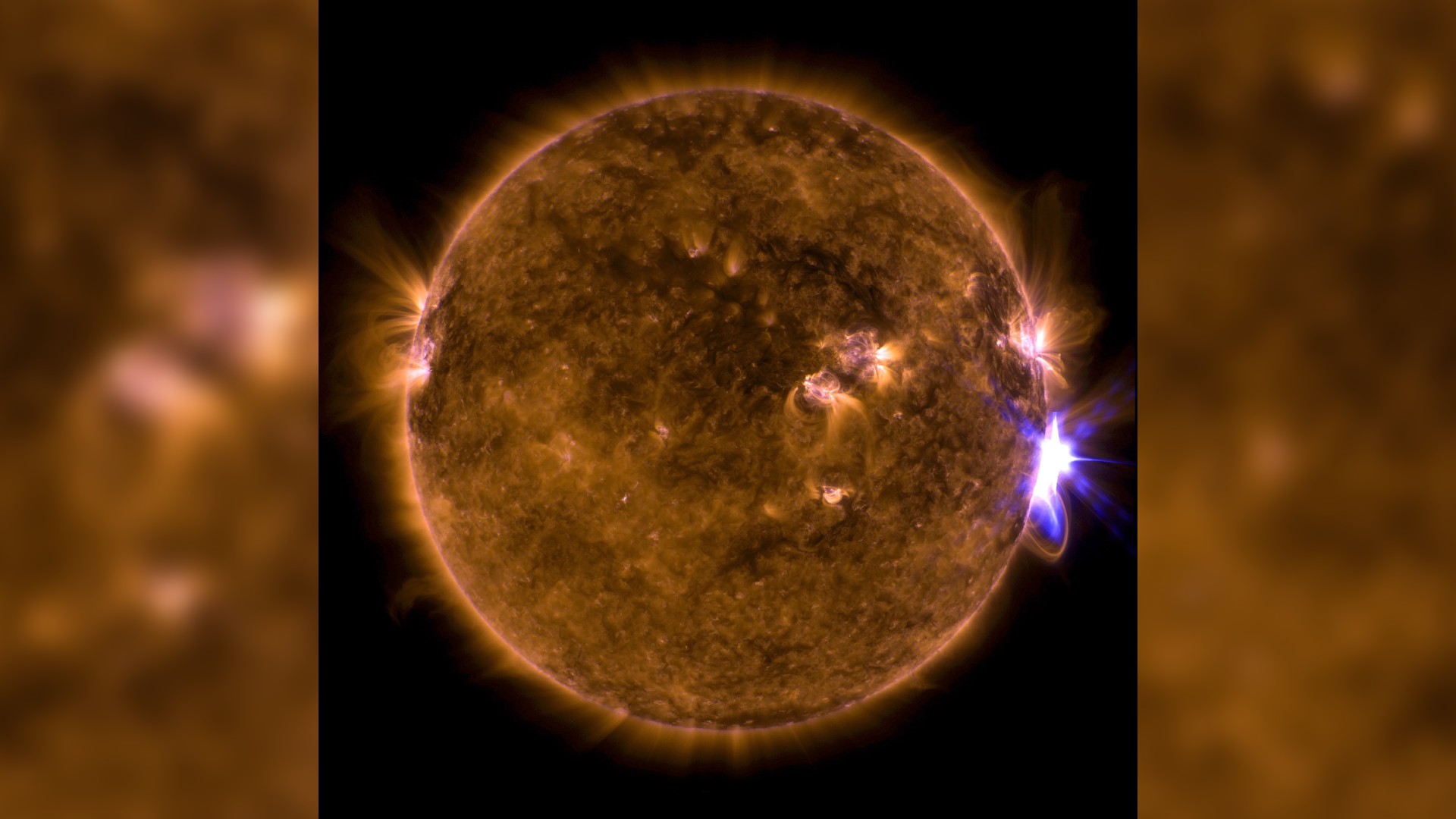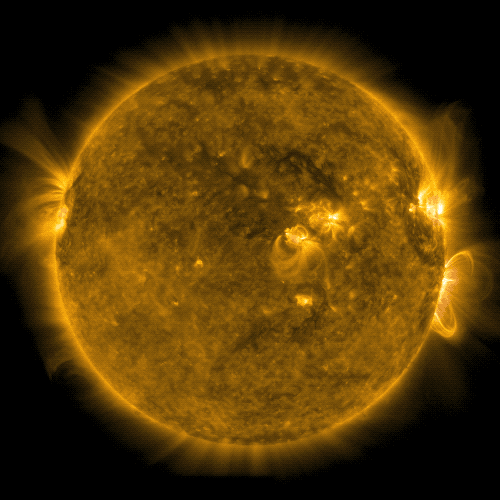7 years ago today, the sun unleashed a record-breaking solar flare

As August 2024 set another 20-year high for sunspot numbers on the sun, recent solar flares have yet to top two solar flares from September 2017. One of these flares, which took place seven years ago on Sept. 10 2017, still holds further unbroken records.
September 2017 saw the declining phase of the previous solar cycle (Solar Cycle 24), which peaked in 2014. Following a period of lower solar activity, active region AR 12673 rapidly emerged onto the scene. AR 12673 produced a number of X-class solar flares, the most notable of which were Sept. 6 and Sept. 10, 2017.
These flares were initially reported as X8.2 and X9.3, but later reclassified as X13.3 and X11.8 after the NOAA flare recalibration in 2020. These flare classes are yet to be definitively topped in the current Solar Cycle 25, despite much higher solar activity levels in general. (There have been some large flares observed behind the sun, that have been unable to be definitively classified).
Although slightly smaller, it was the second of the two flares that really changed the game. Similarly to the large flares from last week, the solar flare from September 10th 2017 erupted right over the western edge of the Sun, with part of its footprint blocked from view. pic.twitter.com/oIrsoXQx3hMay 20, 2024
Although the slightly smaller of these two flares, the Sept. 10, 2017 flare, occurring 7 years ago today, set a number of records, including:
Fastest magnetic emergence
Sunspots are regions of strong magnetic field in the sun's surface, with a cooler temperature (6,330 degrees Fahrenheit or 3,500 ˚C) than the surrounding sun surface (9,930 ˚F or 5,500 ˚C) giving them a darker appearance. Sunspot magnetic fields have been continuously measured for decades, with a well-known correlation between the strength/complexity of the sunspot magnetic field, and their ability to produce large solar flares.
The magnetic field of a sunspot can grow or decay over time, continuously evolving over a typical sunspot lifetime of several weeks. In the days leading to the Sept. 6 and 10 2017 solar flares, AR 12673 produced one of the fastest emergence of magnetic field ever observed in a solar active region. Without this rapid emergence of magnetic field, the largest flares of the solar cycle would likely not have been possible.
Fastest CME acceleration
Solar flares are a conversion of energy from magnetic energy within the sun's atmosphere, to the acceleration of particles, heating of solar plasma, and emission of light across the spectrum. In about 50% of solar flares, they are associated with a coronal mass ejection (CME) — an eruption of solar plasma from the sun's atmosphere.
Get the Space.com Newsletter
Breaking space news, the latest updates on rocket launches, skywatching events and more!
Solar flares and CMEs are often conflated, but can be more easily distinguished by the following analogy: Imagine a firing cannon. The explosion of gunpowder, sound of the explosion and flash of the muzzle can be considered the solar flare, whereas the CME is the ejected cannon ball.
The Sept. 10, 2017 flare triggered a large CME from above the western edge of the sun, not directed directly at Earth. This CME, powered by the large flare, clocked in with the fastest CME acceleration ever observed, and one of the fastest initial CME speeds (4,300 km/s).

Strongest long-duration gamma ray source
Solar flares emit light over most of the spectrum, from radio waves to X-rays. Gamma rays, the highest energy wavelengths of light, are only produced in the very strongest solar flares. The Sept. 10, 2017 flare not only produced a clear gamma ray signal, but continued to emit gamma rays for over 12 hours. Observed by the NASA Fermi Gamma-ray Space Telescope, this solar flare gamma ray emission set the record for the strongest gamma ray source to ever be observed for longer than 12 hours in the sky.
Alongside the gamma ray emission, the event also produced one of the largest solar energetic particle storms to be observed from the Earth's surface, also persisting for several hours. A typical solar flare lasts for tens of minutes, with the very largest X-class flares usually lasting for about an hour. However, some solar flares, aptly named 'long-duration events' can persist for much longer than an hour. The Sept. 10, 2017 flare is an extreme example of this, with strong evidence showing the flare persisted for over 24 hours, far longer than the observable gamma ray source.
Most published solar flare of all time
Active region AR 12673, and its associated solar flares, came at a time in the solar cycle with little else happening over the sun. As a result of this, nearly all dedicated solar telescopes, located both on the ground and in space, which can only observe a small window of the Sun at a time, were all focused on the active region. Due to this, the Sept. 10 flare was observed all across the light spectrum, in radio, microwaves, infrared, visible light, ultraviolet, X-rays and even gamma rays. Energetic particles from the event were measured from Earth orbit, on the ground, and even from Mars.
In part due to this sheer amount of available data on the flare, and in part due to the interesting behavior of the flare itself, the Sept. 10 2017 flare has become the most published solar flare of all time, with well over a hundred academic publications analyzing different facets of the event. The flare was even the subject of my PhD thesis.
As Solar Cycle 25 progresses, having already surpassed the size of the previous cycle, with a solar maximum expected this year, we can look forward to more strong solar flares in the next 1-3 years. But whether or not any of these future flares will break the records set by active region AR 12673 and the Sept. 10 2017 flare remains to be seen.
Join our Space Forums to keep talking space on the latest missions, night sky and more! And if you have a news tip, correction or comment, let us know at: community@space.com.

Dr. Ryan French is a solar physicist, science communicator and author. He is pursuing the mysteries of the sun at the forefront of modern solar physics research, using cutting-edge telescopes on the ground and in space. Ryan also works to share the wonders of the sun and space with the public, through museums and observatories, television, and social media on Twitter and TikTok. Ryan's first book, "The Sun: Beginner's guide to our local star" was published in 2023.









